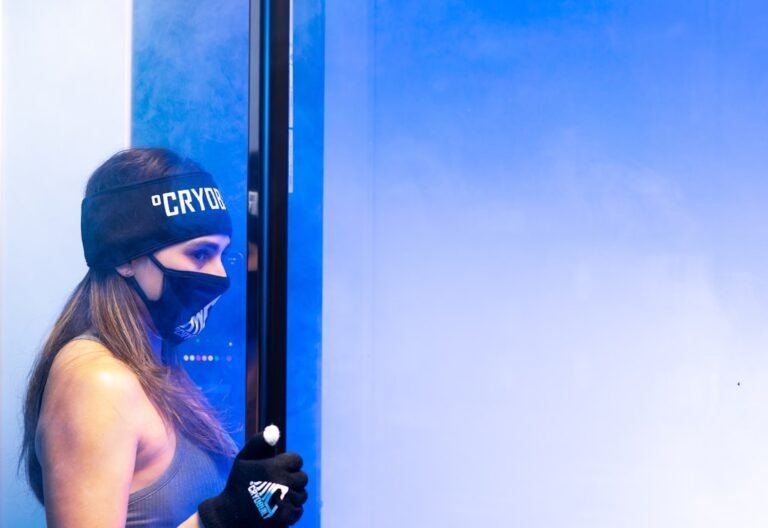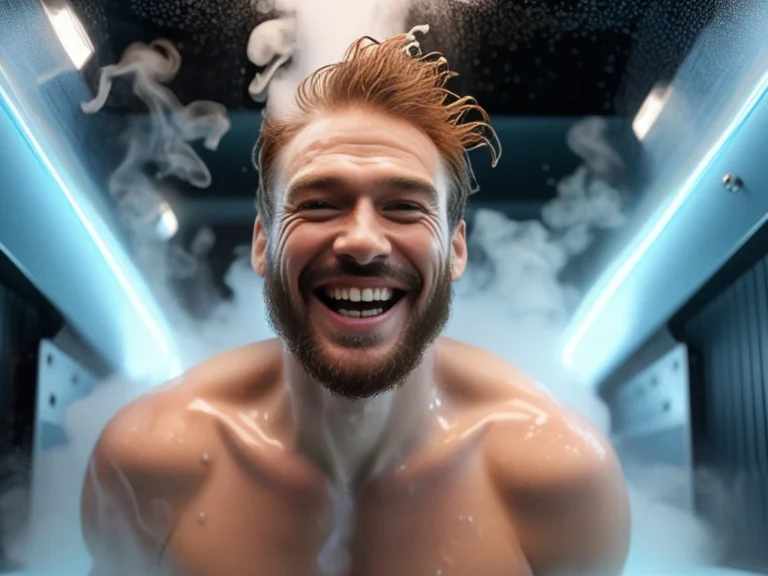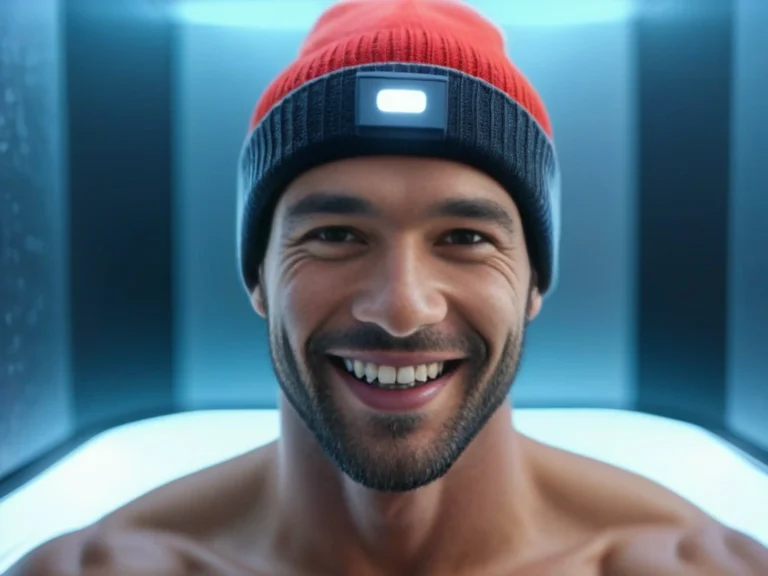Does Cryotherapy Really Work? Debunking Common Myths

Cryotherapy, derived from the Greek words “cryo” meaning cold and “therapy” meaning treatment, is a medical procedure that involves exposing the body to extremely cold temperatures for therapeutic purposes. This treatment has gained popularity in recent years, with many claiming its numerous health benefits. But what exactly is cryotherapy and how does it work?
The concept of cryotherapy dates back to ancient times, with the use of ice and cold water for pain relief and healing. However, it wasn’t until the 1970s that whole-body cryotherapy (WBC) was developed in Japan by Dr. Toshima Yamaguchi as a treatment for rheumatoid arthritis. Since then, cryotherapy has evolved and is now used for a variety of purposes, including pain management, athletic recovery, and even mental health.
Summary
- Cryotherapy involves exposing the body to extreme cold temperatures for therapeutic purposes.
- Cryotherapy works by triggering the body’s natural healing response and reducing inflammation.
- Cryotherapy alone is not an effective weight loss solution.
- There is limited evidence to support the claim that cryotherapy improves athletic performance.
- Cryotherapy may provide temporary pain relief, but more research is needed to determine its long-term effectiveness.
The Science Behind Cryotherapy: How Does it Work?
Cryotherapy works by exposing the body to extremely cold temperatures, typically ranging from -110°C to -160°C (-166°F to -256°F), for a short period of time, usually 2-3 minutes. This is achieved through the use of specialized cryotherapy chambers or cryosaunas. The extreme cold triggers a physiological response in the body, leading to various effects and benefits.
When exposed to extreme cold, the body goes into survival mode and activates several mechanisms to protect vital organs and maintain core temperature. Blood vessels constrict, redirecting blood flow away from the extremities and towards the core. This helps to reduce inflammation and swelling in injured areas, as well as improve circulation.
The benefits of cryotherapy are numerous. It can help reduce pain and inflammation, improve athletic performance and recovery, boost metabolism, enhance mood and mental well-being, and even improve skin health. These effects are believed to be due to the release of endorphins and other beneficial hormones, as well as the activation of the body’s natural healing processes.
Debunking the Myth: Does Cryotherapy Help with Weight Loss?
One of the claims often associated with cryotherapy is its ability to aid in weight loss. It is believed that the extreme cold temperatures can boost metabolism and burn calories, leading to weight loss. However, scientific evidence to support or refute this claim is limited.
While it is true that exposure to cold temperatures can increase metabolism temporarily, the effects are minimal and short-lived. The body quickly adapts to the cold and returns to its normal metabolic rate. Additionally, any calories burned during cryotherapy are unlikely to have a significant impact on weight loss.
That being said, cryotherapy may indirectly contribute to weight loss by reducing inflammation and pain, which can improve mobility and encourage physical activity. It can also help with muscle recovery and reduce muscle soreness, allowing individuals to engage in more intense workouts. However, it is important to note that cryotherapy should not be relied upon as a sole method for weight loss and should be used in conjunction with a healthy diet and regular exercise.
Can Cryotherapy Improve Athletic Performance? A Critical Analysis
Cryotherapy has gained popularity among athletes as a means to enhance performance and aid in recovery. The theory behind this is that the extreme cold temperatures can reduce inflammation, speed up recovery, and improve overall athletic performance. However, the scientific evidence supporting these claims is mixed.
Some studies have shown that cryotherapy can help reduce muscle soreness and improve recovery after intense exercise. It may also help decrease inflammation and oxidative stress, which can improve overall athletic performance. However, other studies have found no significant difference in performance between athletes who underwent cryotherapy and those who did not.
It is important to note that cryotherapy should not be seen as a magic bullet for athletic performance. While it may provide some benefits, it is just one piece of the puzzle. Proper training, nutrition, and rest are still crucial for optimal performance. Additionally, cryotherapy should be used in moderation and under the guidance of a healthcare professional to avoid potential risks and side effects.
Cryotherapy for Pain Relief: Separating Fact from Fiction
Cryotherapy has long been used as a method for pain relief, particularly in the treatment of musculoskeletal injuries and chronic pain conditions. The extreme cold temperatures can help reduce inflammation, numb pain receptors, and promote healing. However, the effectiveness of cryotherapy in pain management varies depending on the type and severity of the pain.
Cryotherapy is commonly used in sports medicine to treat acute injuries such as sprains, strains, and bruises. The cold temperatures help reduce swelling and inflammation, providing immediate relief. It can also be used to manage chronic pain conditions such as arthritis and fibromyalgia, where the cold can numb the pain receptors and provide temporary relief.
However, it is important to note that cryotherapy is not a cure-all for pain. It may provide temporary relief, but it does not address the underlying cause of the pain. It should be used in conjunction with other treatments such as physical therapy, medication, and lifestyle changes for long-term pain management.
The Truth About Cryotherapy and Skin Care: Benefits and Risks
Cryotherapy has gained popularity in the field of skincare due to its potential benefits for the skin. The extreme cold temperatures can help tighten pores, reduce inflammation, improve blood circulation, and promote collagen production. This can result in improved skin tone, reduced signs of aging, and a more youthful appearance.
The benefits of cryotherapy for skin care are largely anecdotal, with limited scientific evidence to support these claims. While some individuals may experience positive results from cryotherapy treatments, others may not see any noticeable changes. It is important to manage expectations and consult with a skincare professional before undergoing cryotherapy for skin care purposes.
It is also important to be aware of the potential risks and side effects of cryotherapy on the skin. The extreme cold temperatures can cause skin burns, frostbite, and other skin injuries if proper safety measures are not followed. Individuals with sensitive skin or certain skin conditions may be more prone to these risks and should exercise caution when considering cryotherapy for skincare.
Cryotherapy for Mental Health: Does it Really Work?
In recent years, cryotherapy has been explored as a potential treatment for mental health conditions such as anxiety and depression. The theory behind this is that the extreme cold temperatures can trigger the release of endorphins and other feel-good hormones, leading to improved mood and mental well-being. However, the scientific evidence supporting these claims is limited.
While some individuals may experience temporary mood improvement after cryotherapy, the effects are likely to be short-lived. There is currently no substantial evidence to suggest that cryotherapy is an effective treatment for mental health conditions. It should not be used as a substitute for traditional therapies such as medication and psychotherapy.
It is also important to consider the potential risks and limitations of using cryotherapy for mental health. The extreme cold temperatures can be overwhelming and may trigger anxiety or panic attacks in some individuals. It is crucial to consult with a mental health professional before considering cryotherapy as a treatment option.
The Safety Concerns of Cryotherapy: What You Need to Know
While cryotherapy is generally considered safe when performed by trained professionals, there are potential risks and side effects that individuals should be aware of. The extreme cold temperatures can cause skin burns, frostbite, and other injuries if proper safety measures are not followed. It is important to choose a reputable cryotherapy facility that adheres to strict safety protocols.
Individuals with certain medical conditions should avoid cryotherapy or consult with their healthcare provider before undergoing treatment. These conditions include but are not limited to: Raynaud’s disease, cold allergies, hypertension, heart conditions, and pregnancy. It is important to disclose any medical conditions or concerns to the cryotherapy provider before starting treatment.
It is also important to note that cryotherapy should not be performed for extended periods of time or at temperatures below recommended guidelines. Overexposure to extreme cold temperatures can lead to serious health complications. It is crucial to follow the guidance of a healthcare professional and adhere to recommended treatment protocols.
Cryotherapy vs. Traditional Medicine: Which One is Better?
Cryotherapy should not be seen as a replacement for traditional medicine, but rather as a complementary therapy. While cryotherapy may provide some benefits for certain conditions, it is not a cure-all and should be used in conjunction with other treatments as recommended by healthcare professionals.
Traditional medicine, which includes medication, physical therapy, surgery, and other conventional treatments, has a wealth of scientific evidence supporting its effectiveness. Cryotherapy, on the other hand, is still a relatively new and evolving field with limited scientific research. It is important to consult with healthcare professionals and make informed decisions about treatment options based on individual needs and circumstances.
The Verdict on Cryotherapy
In conclusion, cryotherapy is a medical procedure that involves exposing the body to extremely cold temperatures for therapeutic purposes. It has gained popularity in recent years due to its potential benefits in various fields such as pain management, athletic performance, skincare, and mental health. However, it is important to approach cryotherapy with caution and consult with healthcare professionals before undergoing treatment.
While cryotherapy may provide some benefits, the scientific evidence supporting its claims is limited and mixed. It should not be seen as a magic bullet or a replacement for traditional medicine. Proper safety measures should be followed to avoid potential risks and side effects. Ultimately, the decision to undergo cryotherapy should be based on individual needs and circumstances, and should be made in consultation with healthcare professionals.
FAQs
What is cryotherapy?
Cryotherapy is a treatment that involves exposing the body to extremely cold temperatures for a short period of time, typically between two to four minutes. This can be done through whole-body cryotherapy or localized cryotherapy.
What are the supposed benefits of cryotherapy?
Proponents of cryotherapy claim that it can help with pain relief, inflammation reduction, muscle recovery, weight loss, and even improve mental health.
Does cryotherapy really work?
There is limited scientific evidence to support the claims made about cryotherapy. While some studies have shown that it may have some benefits, more research is needed to determine its effectiveness.
What are some common myths about cryotherapy?
Some common myths about cryotherapy include that it can cure cancer, boost the immune system, and burn a significant amount of calories. These claims are not supported by scientific evidence.
Is cryotherapy safe?
Cryotherapy can be safe when done properly by a trained professional. However, there are some risks associated with the treatment, including frostbite, skin burns, and inhalation of nitrogen gas.
Who should not try cryotherapy?
People with certain medical conditions, such as Raynaud’s disease, cold allergies, and nerve damage, should not try cryotherapy. Pregnant women and children should also avoid the treatment. It is important to consult with a doctor before trying cryotherapy.






